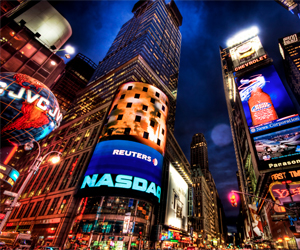 For decades, advertising was a joyous place. Executives enjoyed two-martini lunches as they watched the ad dollars roll in. Ads were spread through every new medium—from print to radio to television. Ad agencies were held to vague benchmarks, and they promised massive exposure (as measured by metrics like number of print subscribers, average daily travelers passing by a billboard or number of television purchases) to the highest bidder. Brands blindly believed that these metrics (potential eyeballs) meant guaranteed success.
For decades, advertising was a joyous place. Executives enjoyed two-martini lunches as they watched the ad dollars roll in. Ads were spread through every new medium—from print to radio to television. Ad agencies were held to vague benchmarks, and they promised massive exposure (as measured by metrics like number of print subscribers, average daily travelers passing by a billboard or number of television purchases) to the highest bidder. Brands blindly believed that these metrics (potential eyeballs) meant guaranteed success.
Advertising still is a joyous place, but for different reasons. Two-martini lunches are a thing of the past (or at least I’m not invited to them). But martinis aside, advertising in the post-advertising age is filled with amazing creativity and opportunities to constantly challenge the status quo, innovate and reach audiences with unique and authentic content.
The Burning Questions
But how can this authentic content prompt intended audience behaviors? How can that be tracked, measured and mapped to ROI?
Digital advertising, social media, digital media, paid/owned/earned media—we like to call it post-advertising—in particular is thriving in this new era not only because of its endless possibilities, but also because it enables brands to track user behavior and measure effectiveness in ways that traditional advertising simply can’t, or at least hasn’t yet. And while Nielsen is respected in its field, any belief that its ratings are an accurate measure of not just what audiences are watching, but also talking about and sharing (to the extend that TV can be shared) is pure fantasy.
In post-advertising, we know who’s paying attention, who’s sharing, where they came from and where they went after interacting with the content. And by matching online identity to offline and specific desired actions, those actions can be measured too. Post-advertising is proven by research and by results.
Depending on your business objective, specific digital tasks can be developed that correspond to metrics that measure success. Want to introduce a new product to Millennials? You can target specific audience demographics and use metrics like impressions, organic likes/followers and completion rate of media to determine what is working and what’s not. Download our Introduction to Social Media e-book to take a deeper dive.
The Simple Answers
All this boils down to a simple strategy: Attract a targeted audience by creating a valuable piece of native content (defined, sort of) that is crafted and deployed to stimulate maximum social sharing, and measure its successes and failures (often in near real time) in order to adjust and fine-tune. Set specific detailed goals and dedicate a team to measuring the metrics that establish whether the efforts are a success.
We’ve done this successfully for clients like WGN America, for which we established a How I Met Your Mother SuperFan community across Facebook, Twitter and YouTube, attracting more than 2.1 million fans and followers and consistently reaching engagement levels of between 10 percent and 20 percent (on Facebook).
We also used social to power a one-day alumni-giving drive for Columbia University that raised a record $7+ million in 24 hours and enjoyed the participation of alumni in all 50 states and in 39 countries.
Stop Asking Whether Post-Advertising Works
I’m not saying that Story is the only agency that creates great brand stories with measurable successes. Plenty of great agencies and individuals out there have their own success stories.
What’s important is that brands understand the type of advertising and marketing landscape we’re living in. Brands are no longer slaves to the gatekeepers of traditional advertising. Endless opportunities abound in the digital age; there are techniques and technologies that are better at prompting desired audience behavior and sharing than traditional advertising has been or ever will be. Not only that, but what we deem post-advertising can be actively measured, adjusted and proven, all at a lower price point than traditional advertising (what’s the going price of a Super Bowl ad again?).
There’s no longer debate about whether post-advertising can spread brand impressions effectively. We know it can, and we know that people trust their own friends and complete strangers online before they trust a branded advertisement. Stop complaining that Facebook is charging you to use its free platform and forcing you to constantly engage your audience with high-quality content. Stop claiming that social media works only for building customer loyalty and can’t drive action.
The only discussion to be had is about how post-advertising works best. How can we create native advertising that’s truly native? What does “native advertising” really mean? Is the best advertising even advertising at all? What will advertising look like next year? In five years?
Advertising doesn’t have to be advertising as usual, and brands can and should expect a lot more from their agencies than the promise of exposure. Oh, and I’ll take my martini shaken, not stirred.

















